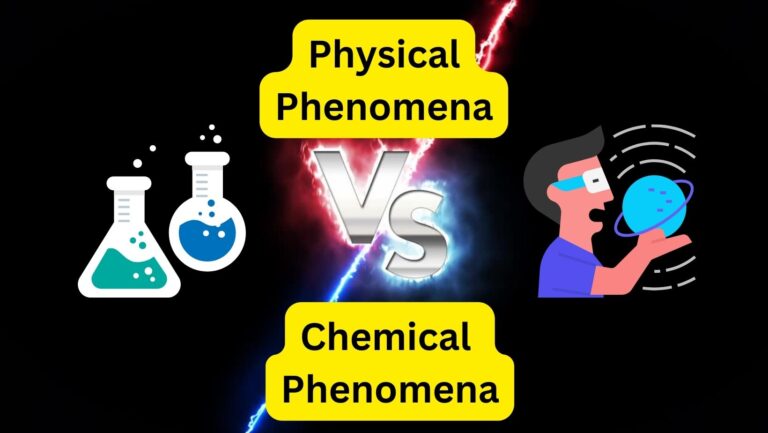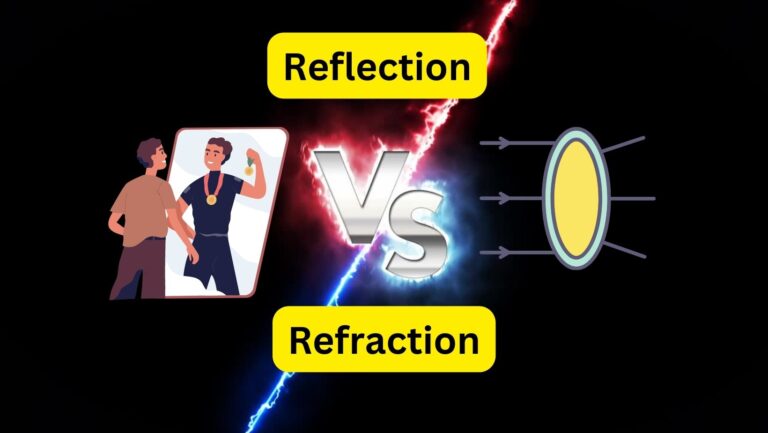
An acid is a substance that is capable of releasing hydrogen ions (H +) in a solution. However, an acid is also considered a substance that can receive a pair of electrons. As for the base, it is considered as a substance capable of dissociating hydroxide ions (OH -) in a solution. In addition, substances capable of donating an electron pair are also considered. Here below this post is all about the difference between acids and bases.
Difference between Acid and Base
Both acids and bases can be identified according to their position on the pH scale. In the case of acids, these have a value lower than 7, while bases (alkaline) have a value higher than 7. Before to learn what is the difference between acid and base, its important to know both acids and bases as well.
What is an Acid?
An acid is a substance capable of releasing hydrogen ions in a solution. In addition, a compound that can receive a pair of electrons is also considered as acid.
The word “acid” comes from the Latin acids , which means ‘sour’ or ‘sharp’, and refers to the unpleasant taste of certain substances (for example, vinegar).
Strong and weak Acids
Acids can be considered strong or weak depending on how they dissociate in an aqueous medium, that is, according to the amount of hydrogen ions they release in a solution.
An acid is strong when it ionizes easily, that is, the vast majority of its hydrogen ions or protons are given up in solution. These acids are highly corrosive and good electrical conductors.
Examples of strong acids are sulfuric acid H 2 SO 4, hydrotropic acid (HBr) and hydrochloric acid (HCl).
In contrast, weak acids are those that do not release a large amount of hydrogen ions and are less corrosive than strong acids. Examples of weak acids are carbonic acid (H 2 CO 3) and acetylsalicylic acid (C 9 H 8 O 4).
Characteristics of Acids
- They are highly soluble in water.
- They react with some metals.
- They function as conductors of electrical current.
- They have a sour taste (lemon, for example).
- They change the color of litmus paper from blue to red.
- They can destroy organic tissues.
- They react with bases, producing water and salt.
- Acid-base reactions are exothermic (they release heat).
Examples of Acids in everyday life
- Ascorbic acid (vitamin C)
- Citric acid, present some fruits
- Acetic acid (vinegar and wine)
- Lactic acid, produced during anaerobic exercise.
- Acetylsalicylic acid (aspirin)
- Hydrochloric acid (gastric juice)
- Sulfuric acid
What is a base?
A base is a substance capable of dissociating hydroxide ions in a solution, having a pH greater than 7. A substance capable of donating a pair of electrons is also considered a base, and includes all alkaline solutions.
The word “base” comes from the Greek basis and means ‘to go’ or ‘walk’, while “alkaline” comes from the Latin alkali , which in turn comes from the Arabic Al-Qali , and means ‘ashes’, particularly those from burnt wood.
Strong and weak bases
Strong bases ionize completely, yielding their hydroxide ions to solution. Examples of strong bases are lithium hydroxide (LiOH), potassium hydroxide (KOH), and sodium hydroxide (NaOH).
As for the weak bases, these are those that partially dissociate. Examples of weak bases are ammonia (NH 3) and sodium bicarbonate (NaHCO 3).
Characteristics of the bases
- They do not react with metals.
- In solution, they conduct electrical current.
- They have a bitter taste (soapy, like chlorine / bleach).
- They change the color of litmus paper from red to blue.
- In solution, they are slippery to the touch.
- They react with acids, producing water and salt.
- Acid-base reactions are exothermic (they release heat).
- Its pH is higher than 7.
Examples of bases in everyday life
- Magnesium hydroxide (milk of magnesia)
- Sodium hypochlorite (bleach, chlorine)
- Baking soda (baking powder)
- Sodium tetraborate (borax)
- Ammonia
- Sodium hydroxide (caustic soda)
Theories of acids and bases
Historically, these substances have been studied based on their properties and interactions with other elements. There are various theories that explain these phenomena and that are still in force.
Some of the best known, and which will be presented below, are the acid-base theory of Arrhenius (derived from his theory of electrolytic dissociation) of 1887, the acid-base theory of Bronsted-Lowry (which presents the notion of conjugated acid-base pairs) of 1923, and the Lewis theory (in which the reception and donation of electrons is fundamental).
Arrhenius acid and base theory
According to the Swedish chemist Svante August Arrhenius (1859-1927), an acid is a substance that releases hydrogen ions H + in an aqueous solution (water).
In the theory of electrolytic dissociation of Arrhenius (1887), acids are compounds that possess hydrogen and that, when dissolved in an aqueous medium, release hydrogen ions (protons) or hydronium (H 3 O + protons surrounded by water molecules). In this case, electrolytes (anions or captions) are capable of conducting electrical charges.
For its part, the base is a substance that dissociates a negatively charged ion (anion) hydroxide (OH -) in an aqueous medium.
The Arrhenius definition has the limitation that it does not consider reactions in which there are no aqueous solution, nor those basic compounds that do not release hydroxide.
Arrhenius acid and base example
Acid: hydrochloric acid or HCI → CI – (aq) + H + (aq)
Base: sodium hydroxide or NaOH → Na + (aq) + OH – (aq)
Bronsted-Lowry acid-base theory
The Danish scientist Johannes Nicolaus Bronsted (1879-1947) and the English scientist Thomas Martin Lowry (1874-1936) published studies (1923) in which acids are defined as substances with the ability to donate or give up protons (hydrogen ions H + without its negative electron) to another that must accept them. As for the base, this is a substance capable of accepting protons (H +) in solution.
Within this theory, acids are not restricted to dissolution in water, other solvents are also included.
Thus, this definition expands the one presented by Arrhenius, in which an acid was limited to a substance that releases hydrogen ions in an aqueous medium. That is, an acid is a substance that donates protons to another substance, while a base accepts them from another substance.
Conjugate acid-base pair
With the Bronsted-Lowry theory, the notion of conjugated acid-base pairs is introduced, by a proton transfer, in which the acid donates them and the base accepts them. In this case, acid and base coexist, since an acid can only act in the presence of a base and vice versa.
When an acid donates a proton, this acid is called a conjugate base. The same happens, on the contrary, when a base receives a proton. This base is known as conjugated acid.
This happens because the acid becomes a conjugate base by donating a proton, that is, a substance that is capable of accepting a proton. In the case of the base, when it accepts a proton, it becomes a substance capable of giving up a proton.
Neutralization reaction
A neutralization reaction occurs when an acid and a base produce water and a salt.
Brønsted-Lowry acid-base reaction example
Hydrochloric acid and ammonia:
HCl (is the acid) + NH 3 (is the base) ⇋ NH 4 + (is the conjugated acid) + Cl – (is the conjugate base)
Lewis acid-base theory
The American scientist Gilbert Lewis (1875-1946), proposed a theory at the same height (1923) in which the Bronsted-Lowry theory was presented. For this scientist, an acid is a substance capable of accepting a pair of electrons.
This definition of acid includes all Bronsted-Lowry acids, since hydrogen ions (protons) are electron receptors, and it encompasses many other substances that do not contain hydrogen.
In Lewis theory, bases are substances that have the ability to donate a pair of electrons.
By including Bronsted-Lowry acids and bases (proton donors and receptors, respectively), the Lewis theory also incorporates Arrhenius acids and bases (hydrogen and hydroxide ions that react in an aqueous medium).
Lewis acid-base reaction example
Ammonia and boron trifluoride:
BF 3 (is the acid) + NH 3 (is the base) → H 3 N – BF 3
Also know the Difference between organic and inorganic compounds.
PH scale
PH is the hydrogen potential of a solution, devised by the Danish scientist Soren Peder Lauritz Sorensen (1868-1939) in 1909. It indicates the concentration of hydrogen ions in a substance. To represent this concentration, a scale is used that indicates the level of alkalinity or acidity of a solution.
This scale is quantified from 0 to 14. Substances that have a level less than 7 are considered acidic, while substances that have a level greater than 7 are considered bases (alkaline).
PH scale: pH = -log 10 [H +]
Each movement from one point to another on the scale is logarithmic, which means that one step increases or decreases the acidity / basicity 10 times with respect to the step immediately below or above. That is, if the acidity of vinegar is pH 3, the acidity of lemon juice is 10 times higher, with a pH of 2.
Water has a pH ranging from 6.5 to 8.5, where the pH of pure water is 7 (which are considered neutral). When water has a pH lower than 6.5, it can have toxic metals in its composition, being corrosive and acidic. When its pH is higher than 8.5, it is called hard water, more basic or alkaline, with a higher presence of magnesium and carbonates.






